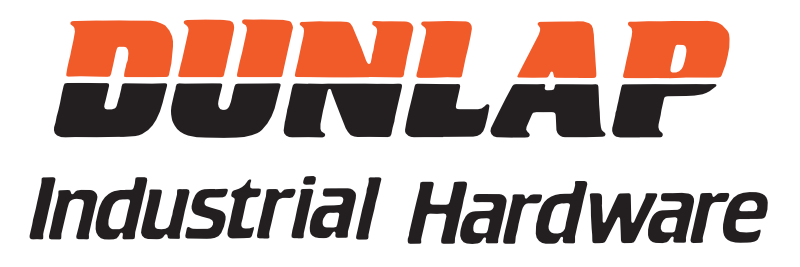Inspection & Removal Criteria for Wire Rope Slings
Before using slings, inspect them to be sure they meet the requirements for the particular application.
How Often to Inspect
Both ASME Standard B30.9 and OSHA require that wire ropes receive two types of inspections:
- A daily visual inspection. The person handling the sling must do this each day. The person inspecting the sling should check for major damage or deterioration that would weaken the sling and for obvious signs such as broken wires, kinks, crushing, broken attachments and severe corrosion.
- Additional inspections at regular intervals. These are based of frequency of sling use, severity of service conditions, the nature of the lifts and prior experience based on service life of slings used in similar circumstances. A designated person who has a working knowledge of wire rope must conduct these inspections.
Inspection shall be made at least annually and shall include a record of the inspection or of apparent conditions to provide the basis for a continuing evaluation. Inspection shall be conducted on the entire length of the sling, including splices, end attachments and fittings.
How To Inspect
The following procedures are offered as a general guide for conducting inspections:
- Place the sling in a position that enables the inspector to access and see every part of the sling.
- Clean off all dirt and grease with a wire brush or rags to reveal wires and fittings.
- Examine the entire length of the sling thoroughly, especially the parts showing the most wear.
- Pay special attention to fittings and end attachments and areas of the sling next to these fittings.
- Find the most worn or damaged section of the sling and carefully check it against removal criteria.
- Label or identify all slings you’ve inspected. 7. Keep records of all inspections, including dates and conditions of slings.
- Immediately destroy all slings you’ve rejected.
- Store slings you want to reuse in a safe place away from damaging weather, heat and dirt.
Inspection and Removal Criteria for Wire Rope Slings When to Replace Your Wire Rope Sling:
According to ASME B30.9, you must remove a wire rope sling from service immediately if any of the following conditions are present:
- Rated Capacity Tag. Missing or illegible sling identification tag.
- Broken wires. For single part body slings and strand laid grommets: 5 broken wires in one strand in one rope lay or 10 broken wires in all strands in one rope lay. For cable-laid, cablelaid grommets and multi-part slings, use the following guidelines:
Allowable broken wires
Cable-laid grommet 20 per lay Less than 8-part braid 20 per braid 8-part braid or more 40 per braid
- Metal loss. Wear or scraping of one-third the original diameter of the outside individual wires.
- Distortion such as kinking, crushing or birdcaging. Look closely for wires or strands that may have been pushed out of their original positions in the rope.
- Heat damage. Any metallic discoloration or loss of internal lubricant caused by heat exposure.
- Damaged end attachments. Cracked, bent or broken fittings. Also, any evidence that eye splices have slipped, or tucked strands have moved.
- Bent hooks. No more than 15 percent over the normal throat openings (measured at the narrowest point) or twisting exceeding 10 degrees is permitted.
- Metal corrosion. Severe corrosion of the rope or end attachments that has caused pitting or binding of wires. Light rusting doesn’t normally affect a sling’s strength.
How to Dispose of Rejected Wire Rope Slings
Once the inspector has determined a sling is no longer usable, he should tag it immediately, “Do Not Use”. The sling should then be destroyed as soon as possible by cutting the eye and fittings from the rope. This will prevent accidental reuse of the sling.
WIRE ROPE WARNINGS
All products are sold with the express understanding that the purchaser is thoroughly familiar with their correct application and safe use. Use all products in a safe manner and for the application for which they were intended. Dunlap Industrial Hardware, Inc. assumes no responsibility for the use or misapplication of any product sold by design and use decisions rests with the user.
IMPORTANT: ANY PRODUCT WILL BREAK IF ABUSED, MISUSED OVERUSED OR NOT MAINTAINED PROPERLY!
Such breaks can cause loads to fall or swing out of control, possibly resulting in serious injury as well as major property damage.
Therefore:
1. Never exceed the Working Loadlimit (WLL).
2. Match components properly.
3. Keep out from under a raised load.
4. Avoid shock loads.
5. Inspect products regularly.
It is impossible to list all possible dangers and misapplications associated with the use of all lifting products mentioned here, However, to promote safe rigging habits the most common hazards associated with the use of these products are outlined.
Working Load Limit
This is the term used throughout the website. There are, however, other terms used in the industry which are interchangeable with the term Working Load Limit. WLL, SWL, Safe Working Load, Rated Load Value, Resulting Safe Working Load, and Rated Capacity. Never exceed the Working Load Limit.
The Working Load Limit is the maximum load which should ever be applied to a product, even when the product is new and when the load is uniformly applied – straight line pull only. Avoid side loading. All catalog ratings are based upon usual environmental conditions, and consideration must be given to unusual conditions such as extreme high or low temperatures, chemical solutions or vapors, prolonged immersion in salt water, etc. Such conditions or high-risk applications may necessitate reducing the Working Load Limit. Working Load Limit will not apply if product has been welded or otherwise modified.
Matching of Components
Components must match. Make certain that components
such as hooks, links or shackles, etc. used with wire rope (or chain or cordage) are of suitable material size and strength to provide adequate safety protection. Attachments must be properly installed and must have a Working Load Limit at least equal to the product with which they are used. Remember: Any chain is only as strong as its weakest link.
Raised Loads
Keep out from under raised load. Take notice of the
recommendation from the National Safety Council Accident Prevention Manual concerning all lifting operations:
“All employees working at cranes or hoists of assisting in hooking or arranging a load should be instructed to keep out from under the load. From a safety standpoint, one factor is paramount: Conduct all lifting operations in such a manner, that if there were an equipment failure, no personnel would be injured. This means keep out from under a raised load and keep out of the line of force of any load. Do not operate a load over people. Do not ride on loads.”
Shock Loads
Avoid impacting, jerking or swinging of load as the Working Load Limit could be exceeded and the Working Load Limit will not apply. A shock load is generally significantly greater than the static load. Avoid Shock Loads.
Regular Inspections
Inspect products regularly for visible damage, cracks, wear elongation, rust, etc. Protect all products from corrosion. The need for periodic inspections cannot be overemphasized. Not product can keep operating at its rated capacity indefinitely. Periodic inspections help determine when to replace a product and reduce rigging hazards. Keep inspection records to help pinpoint problems and to ensure periodic inspection intervals.
Due to the diversity of the products involved and uses to which then can be put, it would be counterproductive to make blanket recommendations for inspection procedures and frequency. Best results will be achieved when qualified personnel base their decisions on information from rigging and engineering manuals and on experience from actual use in the field.
Frequency of inspection will depend on environmental conditions, application, storage of product prior to use, frequency of use, etc. When in doubt, inspect products prior to each use. Carefully check each item for wear, deformation, cracks or elongation – a sure sign if imminent failure. Immediately withdraw such items from service.
Rust damage is another potential hazard. When in doubt about the extent of corrosion or other damage, withdraw the items from service.
Destroy, rather than discard, items that have been judged defective. They might be used again by someone not aware of the hazard involved.

